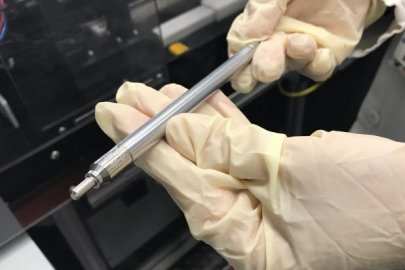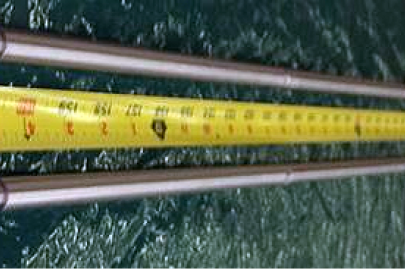Three of the largest U.S. nuclear suppliers are working with the Energy Department to develop new accident tolerant fuels for the nation's reactors.
January 28, 2020Three of the largest nuclear suppliers in the United States are working with the U.S. Department of Energy (DOE) to develop new accident tolerant fuels for the nation’s fleet of reactors.
These new fuel and cladding mixtures could help improve the overall economics and performance of today’s reactors—and allow for longer response times at high temperatures in severe, beyond design basis, accident situations.
Framatome, General Electric and Westinghouse are currently testing these fuels at DOE’s national labs and in commercial reactors. The goal is to have them commercially available by 2026.
What is an Accident Tolerant Fuel?
Accident tolerant fuels are new cladding and fuel pellet designs that increase the performance and severe accident response times of nuclear fuel. They take advantage of new materials that reduce hydrogen buildup, improve fission production retention, and are structurally more resistant to radiation, corrosion, and higher temperatures.
Accident tolerant fuels are expected to last longer than current fuel designs and could potentially extend the time between refueling, such as from 1.5 to 2 years for pressurized water reactors. This could reduce the amount of fuel assemblies needed to operate the reactor—leading to less waste production and a reduction in fuel costs over the life of the reactor.
DOE-Supported Fuels
Westinghouse

Uranium silicide fuel pellets enclosed in a chromium coated zirconium alloy cladding.
Westinghouse is testing uranium silicide fuel pellets for the first time in a commercial reactor. They use a mixture of uranium and silicon instead of uranium and oxygen to achieve a higher density of uranium atoms per pellet. This leads to longer operation times, increase power outputs and high burnups.
The company worked with INL to develop the silicide pellets, which were first manufactured at the lab. The pellets are enclosed in a chromium coated zirconium alloy cladding.
Westinghouse is also partnering with General Atomics to develop an advanced silicon carbide-based cladding concept for possible future implementation.
General Electric

GE’s Global Nuclear Fuel developed IronClad fuel with support from Oak Ridge National Laboratory. It uses a combination of iron, chromium and aluminum for its fuel cladding to improve the fuel’s behavior under extremely high temperatures. The steel material has a much lower oxidation rate when exposed to high temperature steam—improving the safety margins over traditional zirconium cladding used today.
The company is also testing a second fuel and cladding concept known as ARMOR. This coated zirconium cladding was developed outside of the DOE program but is now an integral part of the program.
Framatome

Chromium-coated cladding and chromia-doped fuel pellets.
Framatome is testing chromium-coated cladding and chromia-doped fuel pellets. The special coating is designed to protect the fuel cladding from damage and oxidation at higher temperatures. The new fuel pellet mixture of chromium oxide and uranium oxide powders is expected to help the pellet last longer and perform better at high temperatures.
DOE is providing irradiation and safety testing, along with advanced modeling and simulation, to help these companies qualify their fuels with the U.S. Nuclear Regulatory Commission (NRC).
The program is on track to insert initial core reloads of the new fuels in commercial reactors by 2023 and have full cores licensed for higher burnups by 2026.
What’s the Hurry?
The mid-2020s will be a critical time for the nation’s fleet of reactors.
Many of them have 60-year operating licenses that will expire in the 2030s. Getting these new fuels to market before then would increase the performance of these reactors and ultimately improve their chances of applying for extended operation with the NRC.






